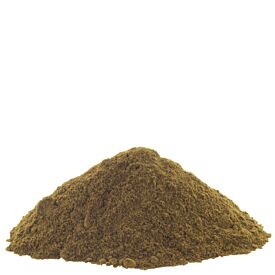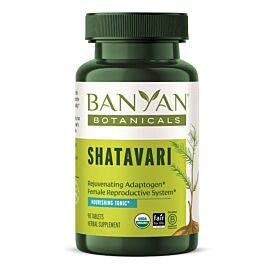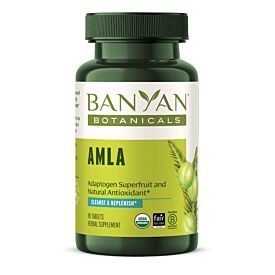The Wellness World’s Most Powerful but Unspoken Process: Rejuvenation
Cleanses and detoxes are exciting and give us hope that we can wash away anything we’ve eaten or experienced that isn’t serving our health’s greater good. What carries as much potency but doesn’t get the same hype is the process of rejuvenation or rasayana. To rejuvenate is to rebuild and enhance the quality of our seven dhatus, or tissues, which secondarily leads to better immunity and a longer life. It helps to repair what has become deficient, excessive, or damaged along the way, making for things like stronger blood, muscle, bones, and nerves. While the wellness world may not speak much about rejuvenating practices, a little education on the matter can give it the flare and luster it deserves.
One doesn’t have to lead off rasayana with a cleanse, but the post-cleansing period should always include rasayana. By Ayurvedic measures, detoxification prepares one to receive, digest, and assimilate medicine, whether it be in the form of food, herbal preparations, lifestyle modifications, or even through behavior. Without this nurturing component, the cleansing process is incomplete. If your health is good, rasayana acts to maintain. If you are ill, rasayana acts to heal. When the correct rejuvenating treatment is being used, it’s something from which everyone can benefit.
As we strive to rejuvenate our body and mind, we bring balance to the doshas. Rasayana, however, is more directed towards dhatus than doshas. “Rasa” means plasma and “ayana” means to enter. Rasa is the first of the seven tissues to form, and its health subsequently impacts each successive tissue. Nutrients enter tissues through channels or srotas, and when the agni of each tissue is in working order, what feeds the first will nourish the second, third, and so on. Thus the translation of rasayana accurately describes Ayurveda’s rejuvenation therapy, but it is really only telling part of the story. Rejuvenation doesn’t occur just by starting at the top and trickling down, specific tissues can be repaired or regenerated. And as you recall, this isn’t only with food. Rejuvenation therapies come by way of four categories: dietary (ahara), herbal remedies (aushadha), lifestyle modifications (vihara), and behavior or social conduct (achara). All bases are covered.

Dietary and herbal rejuvenation can be general or direct. A healthful diet that is pacifying to one’s dosha, imbalance, and the season, supports all tissues and keeps the pep in our step. Still if we are looking for something more specific, we turn to foods that have an affinity for a tissue, such as beets for our red blood cells, sesame seeds for our bones, or milk for our reproductive tissue. The approach with herbal therapy is not dissimilar. Rejuvenating herbs and minerals can be singular or combined, but what they have in common is the ability to support the construct of tissues. The herbal jam Chyavanprash is famously known for its rejuvenating qualities. Comprised of many herbs and spices, it’s a tasty jam with a flavor reminiscent of dates. Akin to Western medicine’s multi-vitamin, chyavanprash is all purpose, and it can work on deficiencies in all tissues. Single herbs and minerals like shilajit, pippali, shatavari, amalaki, and ashwagandha, on the other hand, are rasayanas that have a mission to rebuild a certain dhatu.
A daily routine that aims for a realistic schedule, a comprehensive hygienic regimen, and proper sleeping and eating times are good standards for a healthy and restorative lifestyle. With regards to rejuvenating behavior, following a “good human” protocol is best.
Rejuvenation therapy is most fulfilling when we consider methods outside of what we ingest. Our lifestyle choices and the way we conduct ourselves in society help to make rasayana a complete process, proving that how we choose to expend our energy is as important as the energy we consume.













